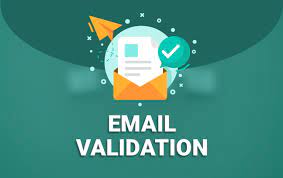React, the popular JavaScript library for building user interfaces, has become a staple in modern web development. When it comes to building forms, email validation is often a critical requirement. In this comprehensive guide, we'll dive deep into email validation in React. Whether you're a beginner or an experienced React developer, you'll gain valuable insights, best practices, and practical techniques to implement robust email validation in your applications.
Why Email Validation Matters
Before we delve into the technical aspects, let's understand why email validation is crucial for your React applications:
1. Data Quality
Validating email addresses ensures that your application collects accurate and reliable user data.
2. Enhanced User Experience
Promptly notifying users of email format errors or typos leads to a better user experience.
3. Security
Valid email addresses help prevent spam submissions and enhance the overall security of your application.
Implementing Email Validation in React
Now, let's explore how to implement email validation in your React application:
1. Set Up Your React Project
If you haven't already, create a React project using Create React App or your preferred setup.
2. Create a Form Component
Design a form component that includes an input field for email input and a submit button.
3. Implement Validation Logic
Use JavaScript functions or libraries like RegEx to validate the email input field. Ensure that the email matches a valid format.
4. Display Validation Feedback
Provide clear and concise feedback to users, indicating whether their input is valid or not. Consider using error messages or visual cues like color changes.
5. Prevent Submission
Disable the form submission button until a valid email is entered. This prevents users from submitting incorrect data.
6. Style Validation Messages
Style your validation messages to make them noticeable but not intrusive. Use CSS classes to control the appearance.
7. Test Extensively
Thoroughly test your email validation implementation with different email formats, including common edge cases.
Best Practices for Email Validation in React
To ensure a robust email validation system, follow these best practices:
1. Use RegEx Sparingly
While Regular Expressions (RegEx) are powerful for email validation, they can become complex and challenging to maintain. Consider using libraries like validator.js or email-validator for cleaner and more maintainable code.
2. Leverage React State
Utilize React state to manage the email input field's value and validation status. This makes it easier to update the UI based on validation results.
3. Keep It User-Friendly
Craft user-friendly error messages that guide users on how to correct their email input. Avoid cryptic error codes or messages.
4. Accessibility Matters
Ensure that your email validation messages are accessible to users with disabilities. Use ARIA attributes for screen readers.
5. Server-Side Validation
Remember that client-side validation is essential for user experience but should always be complemented by server-side validation to prevent malicious submissions.
Common Questions About Email Validation in React
Let's address some of the frequently asked questions regarding email validation in React:
1. Is email validation necessary in React?
Yes, email validation is necessary to ensure data quality, user experience, and security in your React applications.
2. Can I use third-party libraries for email validation in React?
Absolutely. Using established libraries like validator.js or email-validator can simplify the validation process and reduce errors.
3. How can I test email validation in React?
You can test email validation by creating unit tests with testing libraries like Jest and React Testing Library. Write test cases to cover various scenarios and edge cases.
4. What if I want to validate other form fields in addition to email?
You can extend the validation logic to cover other form fields, such as passwords or phone numbers, by following similar principles.
Wrapping Up
Mastering email validation in React is a valuable skill for any frontend developer. By following the best practices and techniques outlined in this guide, you'll be well-equipped to implement robust email validation in your React applications, ensuring data accuracy, user-friendly experiences, and enhanced security. Happy coding!



